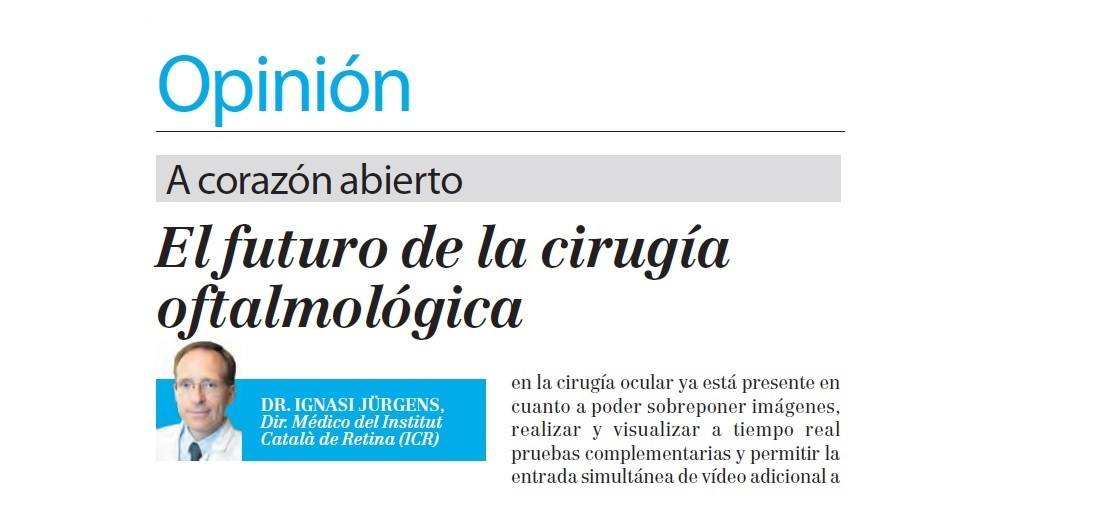
Doctor Ignasi Jürgens, medical director of the Institut Català de Retina, has published an article in Gaceta Médica explaining the importance of technology in ophthalmology and what has being its evolution at a technological level.
In this article, the doctor highlights how ophthalmology has always been next to cutting-edge technological innovation to be able to perform microsurgery with maximum safety for the patient and obtaining more efficient results.
The doctor explains how ophthalmology was a precursor in the use of microscopes and in the use of computer equipment. And, how it continues to be at the forefront in the use of new technologies, such as virtual reality tools or the use of 3D technology, to perform diagnostics and to carry out eye surgeries with great precision.
The article concludes that these new technological tools are already making possible to perform surgeries with greater safety for the patient and with more optimal results.
We have translated the article and it can be read down below. You can also read the original article in Spanish by clicking on the following link: http://www.gacetamedica.com/opinion/a-corazon-abierto/el-futuro-de-la-cirugia-oftalmologica-XA1507462
The development of therapeutic tools has been unstoppable during the last years. In fact, ophthalmology was the first specialty that incorporated the use of the microscope in surgery, and today is the maximum exponent of microsurgery.
With the arrival of the most modern microscopes and thanks to the incorporation of powerful computer equipment, microscopy has gone beyond magnification systems, introducing a series of own tools of augmented reality. This technology is present in our day to day with leisure applications such as Pokémon Go and looks like it will boost sectors such as the automobile with autonomous driving.
In ophthalmology, we find different examples of augmented reality. We have the most advanced microscopy systems in the world that automatically combine the information collected by the equipment involved in the operation and that points at the exact position in which the lens must enter in an assisted and automated way or, for instance, the first intraoperative surgical microscope guided by OCT, which processes the images by sections and offers improved visualization and precision.
In this sense, augmented reality in eye surgery is already present in terms of being able to superimpose images, performing and visualizing in real time complementary tests and allowing the simultaneous entry of additional video to the microscope by an auxiliary port. In addition to that, work is being done so that in the near future, the resolution increases, making the invisible visible, such as the vitreous or the limiting membrane, integrating more complementary tests, monitoring the instrument tip or avoiding unnoticed touches on unwanted tissues.
Another great and outstanding advance in surgery has been the ability to recover stereopsis / vision in 3D instead of having a flat image. 3D surgery allows, in addition to seeing on the screen the same thing that is seen through the lens of the microscope, improving the safety of the procedure and the surgical results. The perception of depth is increased, allows more participation of the operating room staff in the surgical act and incorporates complementary information of great utility for the surgeon, as in augmented reality.
In conclusion, Computer-Assisted Ophthalmologic Surgery is already a reality. The possibility of being able to see with 3D screens, the digital processing of the image and incorporating complementary information from augmented reality allows us to perform a safer and more efficient surgery.
Contact us or request an appointment with our medical team.